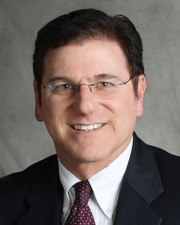News: Front Section
Posted: September 25, 2008
Partnership distributions - A taxing problem for exchangers - Calif. Franchise Tax Board takes aim
The IRS and the tax courts have long scrutinized transactions wherein partnerships dispose of property by first distributing the property to the partners who then sell or exchange their respective interest and - vice versa - transactions wherein the partnership exchanges and immediately thereafter distributes a tenant in common (TIC) interest to the partners.Â
The Drop and Swap
In a "drop and swap" transaction, the partnership conveys a fractional interest to each of the partners who then sell or exchange. The risk factors are as follows:
*The individuals who received their interest from the partnership may not meet the "qualified use," i.e. the "held for investment" requirement of IRC section 1031 because the individuals received the property just prior to the exchange and for the sole purpose of selling it. See Rev Rul 75-292, 1975-2 Cum Bull 333; Rev Rul 77-337, 1977-2 Cum Bull 305 and Rev Rul 84-121, 1984-2 Cum Bull 168.
*The partnership's transfer to the partners may be treated as a sale followed by a liquidation. Thus, the gain would be allocated to all of the partners.
*The IRS could argue that the new TIC ownership is really a partnership and therefore the transfer of the TIC interests in exchange for real property is really an exchange of a partnership interest which is excluded under section 1031(a)(2)(D).
Practitioners should review the following adverse rulings: Chase v. Commissioner (1989) 92 TC 874; Crenshaw v. Commissioner (5th Cir 1971) 450 F2d 472; Rev. Rul. 77-337, and Commissioner v. Court Holding Co. (1945) 324 US 331, 89 L Ed 981, 65 S Ct 707.
Likewise, practitioners should be wary of the two significant cases supporting the "drop and swap" - Bolker v. Comm. (1983) 81 TC 782, aff'd (9th Cir. 1985) 760 F2d 1039 and Magneson v. Comm. (1983) 81 TC 767, aff'd (9th Cir. 1985) 753 F2d 1490, because the facts in both cases arose prior to 1984 when section 1031 was amended to expressly exclude partnership interests. See section 1031 (a)(2)(D).
Although the "drop and swap" structure is inherently risky, certain actions may minimize the risk:
*The deed to the partners should precede the exchange for as long a period as possible;
*The sales contract for the property should be negotiated and executed by the tenant in common owners;
*The proceeds from the property should be distributed to the tenant in common owners; and
*The tenant in common owners should participate as the owners of the property for all income and expenses.
The Swap and Drop
In the alternative "swap and drop" transaction, the partnership exchanges into replacement property and immediately thereafter conveys a TIC interest to each partner. The IRS could argue that the replacement property was never held by the partnership for investment because it held the property only briefly before distributing it to the partners. See Rev Rul 75-292 wherein the IRS ruled against the taxpayer in a similar situation.
Minimize the risk - Obtain advice from a tax advisor experienced in partnership distributions and 1031 exchanges
Due to the complex nature of these transactions and the historical scrutiny by the IRS, taxpayers contemplating a pre or post exchange distribution should consult with their tax advisor well in advance of the contemplated transaction to ensure that they minimize any risk.
Crackdown by the California Franchise Tax Board on transactions involving TICs
In November 2007, the Calif. Franchise Tax Board (FTB) issued Notice 2007 1107 02 indicating that it would also scrutinize these transactions. The FTB noted that, in many instances, the property interest exchanged was more closely aligned with a partnership rather than a TIC thus resulting in an increase in audits and tax adjustments related to section 1031 exchanges. You may review this notice at www.ftb.ca.gov/professionals/taxnews/2007/1107/1107_2.shtml.
Some of the factors that the FTB intends to consider in determining whether the property interest exchanged is a partnership interest or a real property interest are as follows:
*The agreement of the parties and their conduct in executing its terms;
*The contributions, if any, that each party makes to the venture;
*Control over income and capital, and the right of each party to make withdrawals;
*Whether the parties are co-proprietors who share in net profits and have an obligation to share losses;
*Whether business was conducted in the joint names of the parties;
*Whether the parties held themselves out as a joint venture; and
*Whether separate accounts were maintained for the venture.
Submitted by Lynne Bagby, CES, a VP/regional manager of OREXCO 1031 Exchange, Boston, Mass.Lynne Bagby
Tags:
Front Section
MORE FROM Front Section
Newmark negotiates sale of 10 Liberty Sq. and 12 Post Office Sq.
Boston, MA Newmark has completed the sale of 10 Liberty Sq. and 12 Post Office Sq. Newmark co-head of U.S. Capital Markets Robert Griffin and Boston Capital Markets executive vice chairman Edward Maher, vice chairman Matthew Pullen, executive managing director James Tribble,

Quick Hits
Columns and Thought Leadership

Five ways to ruin a Section 1031 Like-Kind Exchange - by Bill Lopriore
While there is some flexibility when structuring a like-kind exchange, some important requirements must be met. A mistake can ruin your exchange. Here are five mistakes to avoid:

How COVID-19 has impacted office leasing - by Noble Allen and John Sokul
To say that the effects of COVID-19 has transformed office leasing is an understatement. When COVID-19 was at its peak, office spaces were practically abandoned either through governmental mandates or through actions taken by businesses themselves.

Make PR pop by highlighting unique angles - by Stanley Hurwitz
Coming out of the pandemic, a client with three hotels in Provincetown, Mass., needed ways to let the world know his properties were open for business for the 2021 tourist season.

Four tips for a smooth 1031 Exchange - by Bill Lopriore
Many real estate investors do not understand the specific requirements that must be met to secure the benefits of a tax-deferred 1031 exchange. For example, the replacement property must be identified within 45 days of the closing date of the relinquished property.







